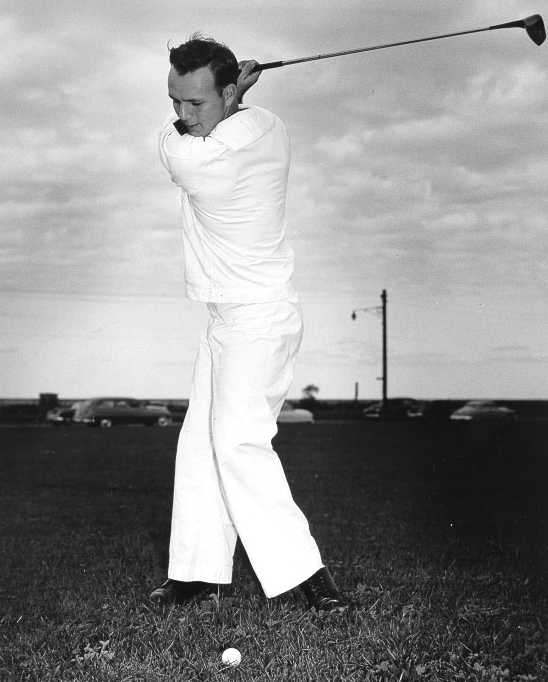 By Scott T. Allison and George R. Goethals
By Scott T. Allison and George R. Goethals
In the world of sports, seldom do world-class athletes make the same heroic efforts to connect with their fans as they do to excel in their sport. Most athletes, especially the elite ones, go about their business on the playing field and then retreat to their personal lives while giving minimal attention to the fans who pay their hefty salaries.
Arnold Palmer is a refreshing exception to this general rule. There is no disputing his remarkable talent. Between 1955 and 1973, he won 62 tournaments on the PGA tour, ranking him 5th among all the golfers who have ever played the game. He also won 7 major championships, again placing him among the best all-time.
But these cold statistics do not begin to tell the story of Palmer's heroism. Fans who came to see him golf were treated to a memorable and appealing image. Palmer was a handsome man with a boyish smile and a friendly twinkle in his eyes. With ease and grace, he connected with his large legion of fans, called Arnie's Army, who eagerly traced Palmer's every move around the golf course. To them, Arnie was known as The King. Palmer initiated conversations with members of his adoring crowd, always looking them in the eyes when addressing them. Any fan who met him walked away believing he or she was the most important person Palmer had ever met.
The image of Palmer as "every man" was enhanced by his style of playing golf. Most professional golfers play a conservative brand of golf designed to avoid mistakes.  Palmer eschewed this strategy. He attacked the golf course, attempting shots that only weekend golfers with nothing to lose would dare to try. Even his powerful swing was unorthodox; it had an odd hitch in the follow-through that smacked of reckless abandon. He marched after every shot with a bold, brazen gait that exuded confidence.
Palmer eschewed this strategy. He attacked the golf course, attempting shots that only weekend golfers with nothing to lose would dare to try. Even his powerful swing was unorthodox; it had an odd hitch in the follow-through that smacked of reckless abandon. He marched after every shot with a bold, brazen gait that exuded confidence.
Palmer was legendary for honoring every request to sign autographs that came his way. When younger golfers, such as Curtis Strange, would complain about having to spend so much time signing autographs, Palmer would politely remind them of their responsibility to the people who made them rich and famous. During his rookie year in 1997, Tiger Woods expressed his frustrations to Palmer about his newfound fame. “I can’t be a normal 21-year-old,” said Tiger. “I have to sign autographs all the time, talk to the media after I play, do photo shoots for my sponsors. It just never ends.” Palmer replied to Tiger, “You’re right, Tiger, you aren’t a normal 21-year-old. Normal 21-year-olds don’t have $50 million in the bank. If you want to be normal, give the money back.”
Our images of heroes have at least three different components: Visual, dispositional, and behavioral. Visually, with his good looks and powerful build, Palmer fit the mold of a hero perfectly. Dispositionally, his natural charm and warmth drew people to him like a magnet. He was electric and charismatic both on and off the golf course, yet he remained a caring and humble man. No one spent more time with fans or connected with them emotionally better than Palmer could. Behaviorally, Palmer fit our image of a hero to a tee (pun intended). Palmer was a true gentleman in his conduct, a man who exhibited supreme talent at his job yet displayed a humility and respect for all people.
Below is a video tribute to the great Arnold Palmer.
